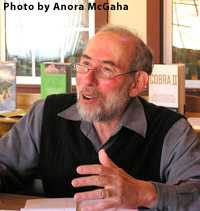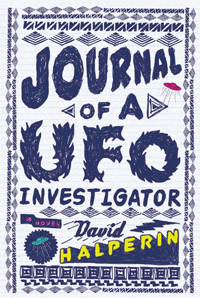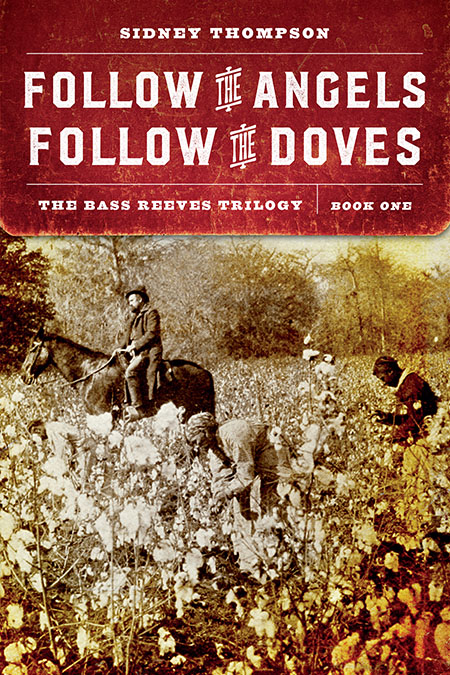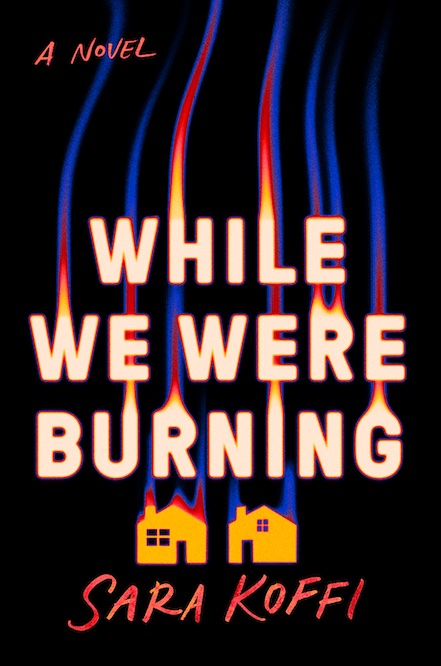Time Out of Mind
David Halperin’s first novel is a fantastical tale of gypsies, UFOs, and more than a little autobiography
As proof that there’s something in the Bible for everyone, UFO fetishists have long seen a connection between extraterrestrial craft and the holy scriptures. Websites, blogs, books, and documentaries have been devoted to the idea that biblical visions—Ezekiel’s wheel, for example—may in fact refer to unidentified flying objects. Debut novelist David Halperin, however, is the first to use such connections as a plot device. In Journal of a UFO Investigator, Halperin, a retired religious-studies professor, weaves the UFO phenomenon together with issues of faith, loss, and the pain of growing up.
Set in mid-1960s suburban Philadelphia, Journal of a UFO Investigator centers on the activities of Danny Shapiro, an alienated adolescent who takes comfort in his search for, well, aliens. Danny’s mother, a lapsed Orthodox Jew, suffers from a heart condition that’s left her bedridden and teetering on the edge of death; his father, a Baptist, is an angry man marking time until his wife passes and his son leaves the house. But that’s just a starting point for Halperin. Like Ezekiel’s wheels within wheels, Danny’s personal trials meld into an increasingly fantastic series of alternate plots that take the young UFO investigator from the center of the Earth toward the Moon, and from the biblical Well of Souls to the Great Makhtesh crater near Jerusalem––all the while being pursued by clawed creatures and three mysterious men in black.
 As fact and fantasy crash into one another, Danny and his three associates––the Super-Science Society (SSS), which includes Danny’s love interest, the seductive Rochelle Perlmann––become involved in the pursuit of a hand-annotated copy of Morris K. Jessup’s 1955 classic, The Case for the UFO. In reality—real-life reality, that is, and not the “reality” of Danny’s life in this novel—an extensively inscribed copy of Jessup’s book, one of the first to make the case for serious UFO study, was delivered to the Office of Naval Research in 1957. The volume, sent in an envelope marked “Happy Easter,” contained the cryptic marginal notes of three different editors, who appear in the novel as the men in black. Are they aliens? Gypsies? Zionists? Are they from outer space or inner space? The reader suspects but never knows for sure. As the men in black close in, the bookish Danny is forced to become a hero in an increasingly alien landscape.
As fact and fantasy crash into one another, Danny and his three associates––the Super-Science Society (SSS), which includes Danny’s love interest, the seductive Rochelle Perlmann––become involved in the pursuit of a hand-annotated copy of Morris K. Jessup’s 1955 classic, The Case for the UFO. In reality—real-life reality, that is, and not the “reality” of Danny’s life in this novel—an extensively inscribed copy of Jessup’s book, one of the first to make the case for serious UFO study, was delivered to the Office of Naval Research in 1957. The volume, sent in an envelope marked “Happy Easter,” contained the cryptic marginal notes of three different editors, who appear in the novel as the men in black. Are they aliens? Gypsies? Zionists? Are they from outer space or inner space? The reader suspects but never knows for sure. As the men in black close in, the bookish Danny is forced to become a hero in an increasingly alien landscape.
Halperin’s tale reaches its climax in the still-divided Jerusalem as the SSS attempts to return Danny’s half-alien baby––the product of an extraterrestrial “seeding”––to Roswell, New Mexico. By so doing, they intend to save the world and “destroy death by unweaving time.”
To think that that mission might be accomplished is to underestimate Halperin’s Charlie Kaufman-like ability to wrap meaningful messages in a non-linear, parapsychological framework. Part vintage comic book, part theological treatise, Journal of a UFO Investigator is confoundingly intricate. It’s often impossible to tell whether events are real or imagined, past or present, or some combination thereof. And a tidy ending? Forget it. But that sense of factual non-reality is exactly what Halperin is going for. “Myths are real,” says Rochelle to Danny. “They have to be real. Otherwise they wouldn’t stay around for centuries. They’d vanish like last year’s top tunes.”
 Of all Journal of a UFO Investigator’s moving parts, it’s Halperin’s own history that provides the book’s unexpected emotional depth. Beneath the seemingly silly paranormal goings-on lies the beating heart of a boy struggling to come to terms with life’s cruelties. In interviews Halperin has admitted that UFO research enabled him to cope with a particularly difficult childhood. It’s no surprise, then, that painful events in David’s life have the unmistakable air of truth. “I knew it all, the way you know a home in which you haven’t been very happy, perhaps, but where you’ve lived so long you can’t imagine home anywhere else,” David says.
Of all Journal of a UFO Investigator’s moving parts, it’s Halperin’s own history that provides the book’s unexpected emotional depth. Beneath the seemingly silly paranormal goings-on lies the beating heart of a boy struggling to come to terms with life’s cruelties. In interviews Halperin has admitted that UFO research enabled him to cope with a particularly difficult childhood. It’s no surprise, then, that painful events in David’s life have the unmistakable air of truth. “I knew it all, the way you know a home in which you haven’t been very happy, perhaps, but where you’ve lived so long you can’t imagine home anywhere else,” David says.
And then there’s the author’s academic path. A professor emeritus of religious studies at the University of North Carolina in Chapel Hill, Halperin’s area of study is Jewish mysticism, including Kabbalah and the fevered visions of the prophet Ezekiel. Halperin, a confessing Unitarian, can’t resist slipping an insurgent spoke into Journal of a UFO Investigator’s intersecting wheels. “Don’t ever tell me religion is anything more than a turtle,” Danny tells Rochelle, echoing the maxim about science as “a turtle that says its own shell encloses all things.” The same can be said of everything, of course. Halperin ends one chapter with a quote from Hamlet: “There are more things in heaven and earth, Horatio, than are dreamt of in your philosophy.”
In Journal of a UFO Investigator Halperin has assembled a captivating story that exudes truth even as it throws reality to the dogs. Among such an idiosyncratic mix of legend, culture, science, pseudoscience, and religion, nothing can be trusted except the essential human realities of suffering, love, and mystery. And isn’t that what mythology––and fiction––are all about?
David Halperin will appear at the 2011 Southern Festival of Books, held October 14-16 in Nashville.


